6. BioFabricating Materials¶
Imagine a new way, then make it the only way.
References & Inspiration¶
From Cecilia's presentation, I saved a long list of names of people, who've done some amazing work. One of them is Clara Davis.


Process and workflow¶
For this weeks' assignment, we worked as a group. We devided the tasks so that everyone had the opportunity to pass through each of the steps of the recpes. While someone was measuring the ingredients, someone else was stiring, another was pouring the mixture into the molds.
Crafted biomaterials
Agar Bio-plastic:¶

Prepare this recipe by collecting the ingredients necessary, to be found in the list below:
* agar-agar powder - 4 gr
* water - 100 ml
* glycerine - 0 gr (brittle);
- 5 gr (semi-flexible);
- 14 gr (flexible).
* pigments
* flowers, peels, etc.
* cinnamon
* pots
* stove
* molds
* electronic scale
* spoon
* glasses
* Warm water in a pot
* Add the Glycerine
* Add the Agar
* Mix gently at 60 ºC so that Agar is dissolved with the Glycerine.
* Simmer more for 15-20 min at 80ºC.
* Prepare Molds.
* Prepare your colours in jars.
* Once it becomes thicker like a syrup, mix your colours on the jars and gently cast in moulds.
* Let it dry in a ventilated and dry room
RESULTS¶

Bio-foam¶
* 48 gr Gelatine
* 8 gr Glycerine
* 240 ml Water
* tablespoon Soap
* pots, jars
* stove
* molds
* electronic scale
* spoon
* glasses
* Warm water in a pot on the stove (water can be plain or already dyed)
* Add the Glycerine
* Add the Gelatine
* Mix gently the ingredients until a smooth mix
* Add a table spoon of dishwashing soap to the mixture
* Boil for 15-20 min at 80-86ºC max whisking constantly.
* Prepare Molds.
* If you are paling to use multiple colors, prepare them in jars.
* Once it becomes thicker like a syrup, mix your colours on the jars and gently cast in moulds.
* Let it dry in a ventilated and dry room
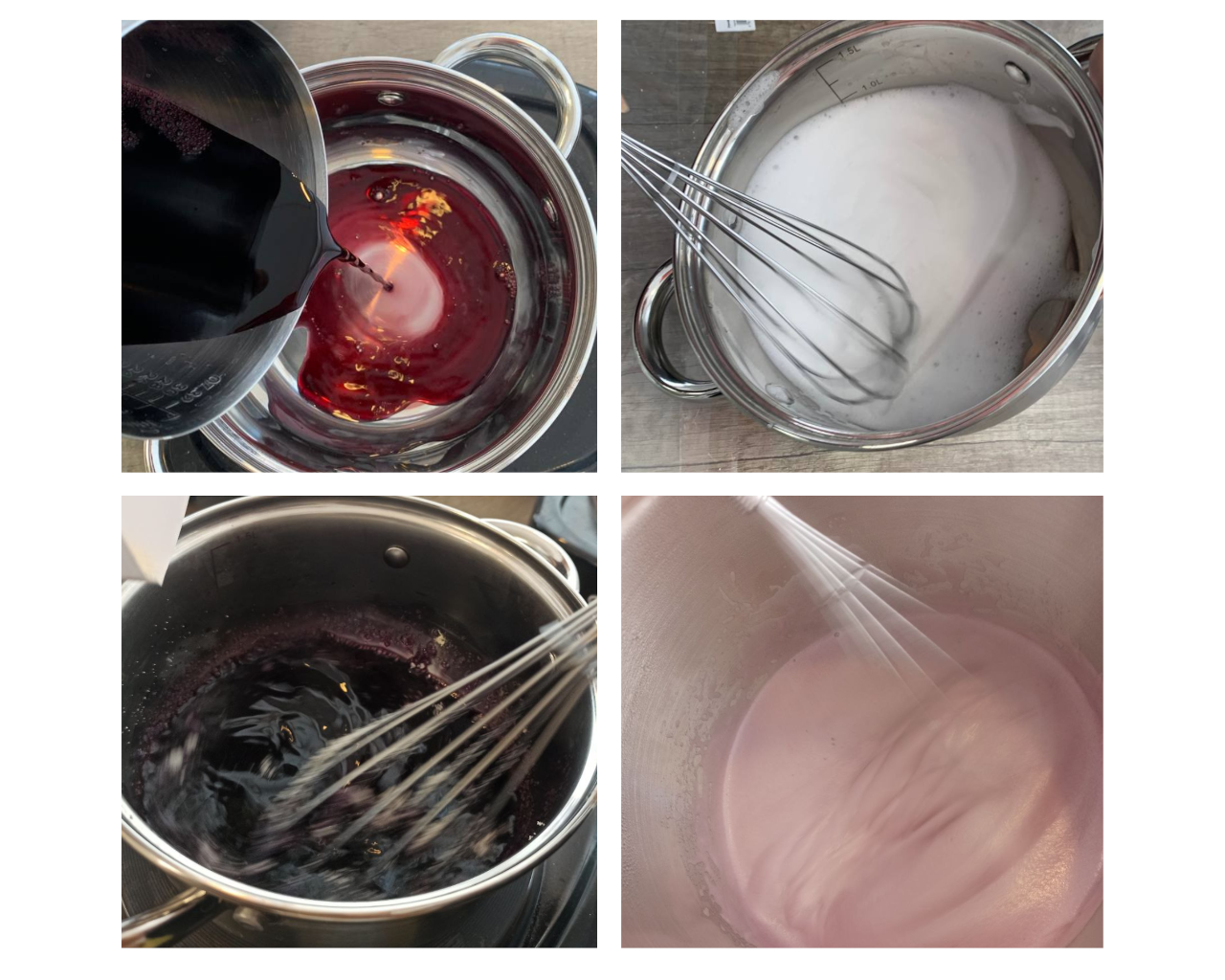
Results¶
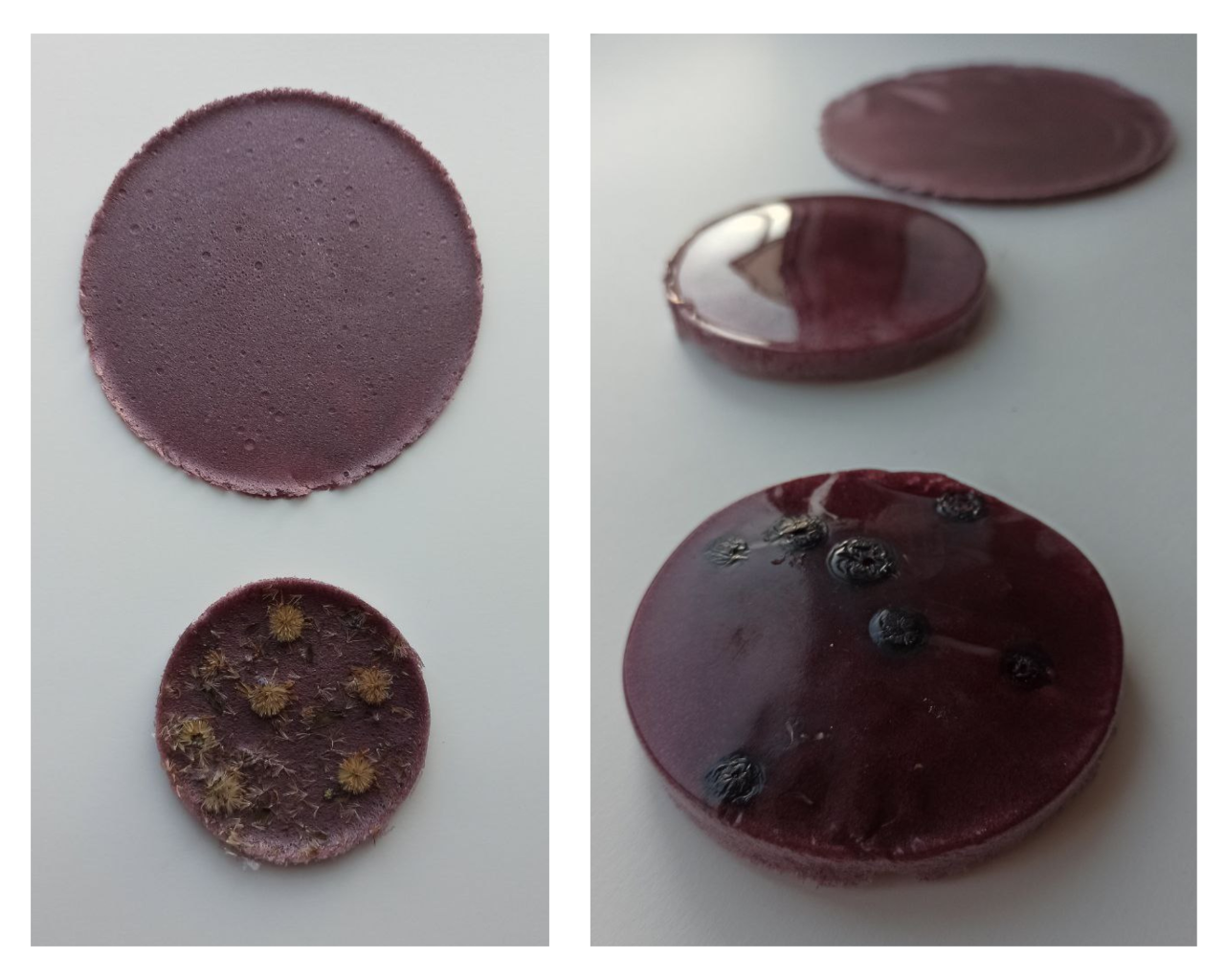
Gelatine Based Bioplastic
* 48 gr Gelatine
* 250 ml Water
* glycerine - 0 gr (hard);
- 24 gr (semi-elastic);
- 48 gr (elastic).
* pigment, flowers, peels, etc.
* pots
* stove
* molds
* electronic scale
* spoon
* glasses
* Warm water in a pot on the stove (water can be plain or already dyed)
* Add the Glycerine
* Add the Gelatine
* Mix gently the ingredients until a smooth mix
* Boil for 15-20 min at 80-86ºC max whisking constantly.
* Prepare Molds.
* If you are paling to use multiple colors, prepare them in jars.
* Once it becomes thicker like a syrup, mix your colours on the jars and gently cast in moulds.
* Let it dry in a ventilated and dry room
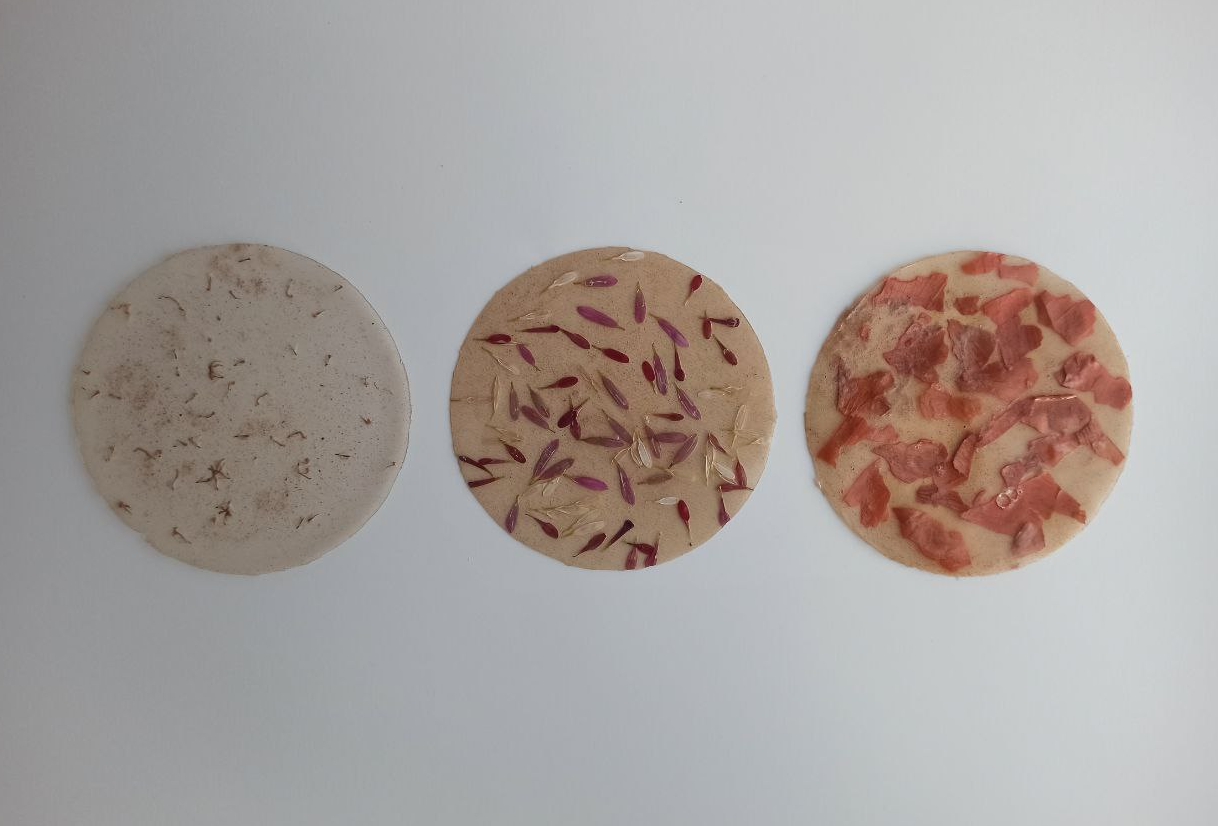

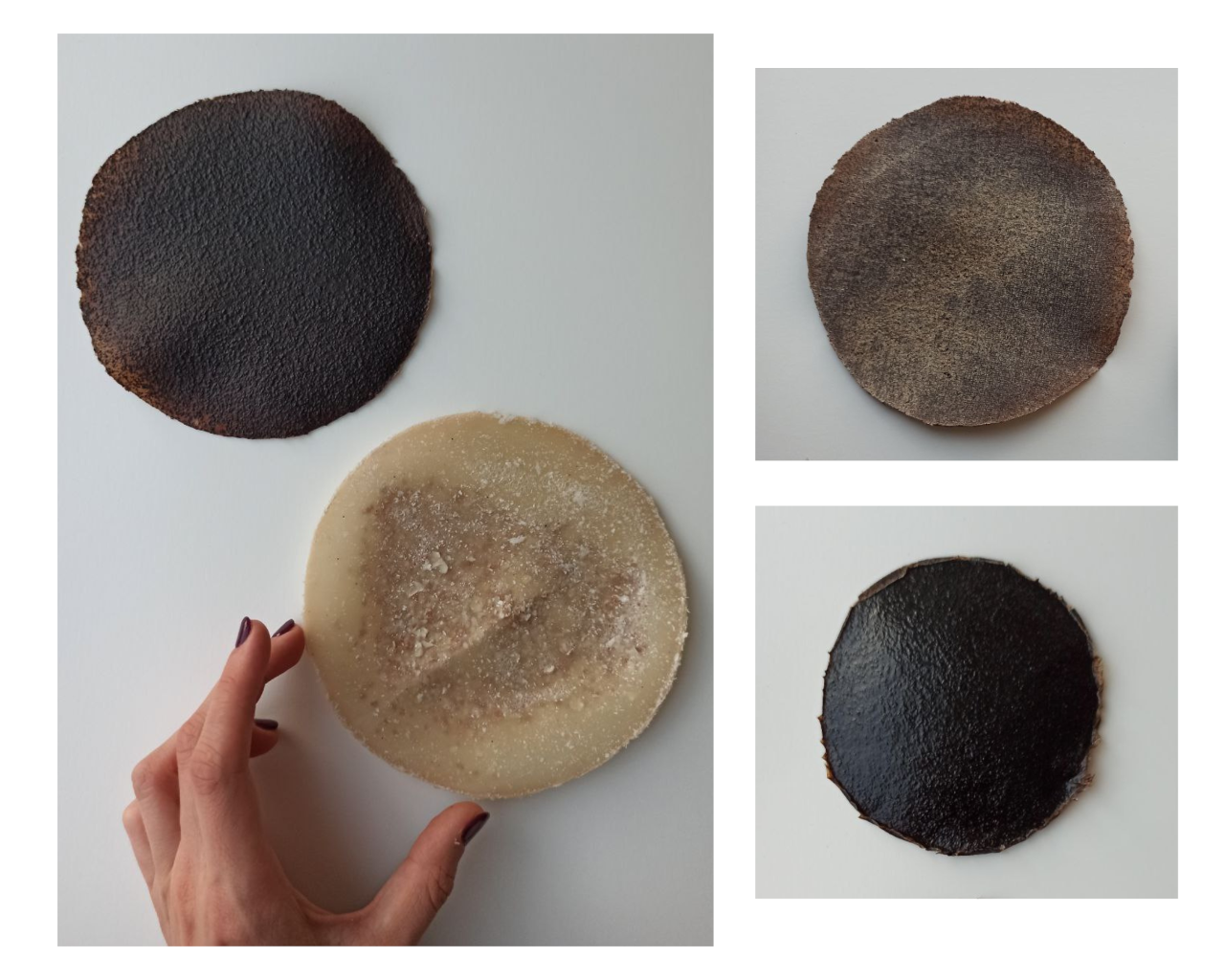
After making all the samples as a group, I worked on these two samples, by my self.
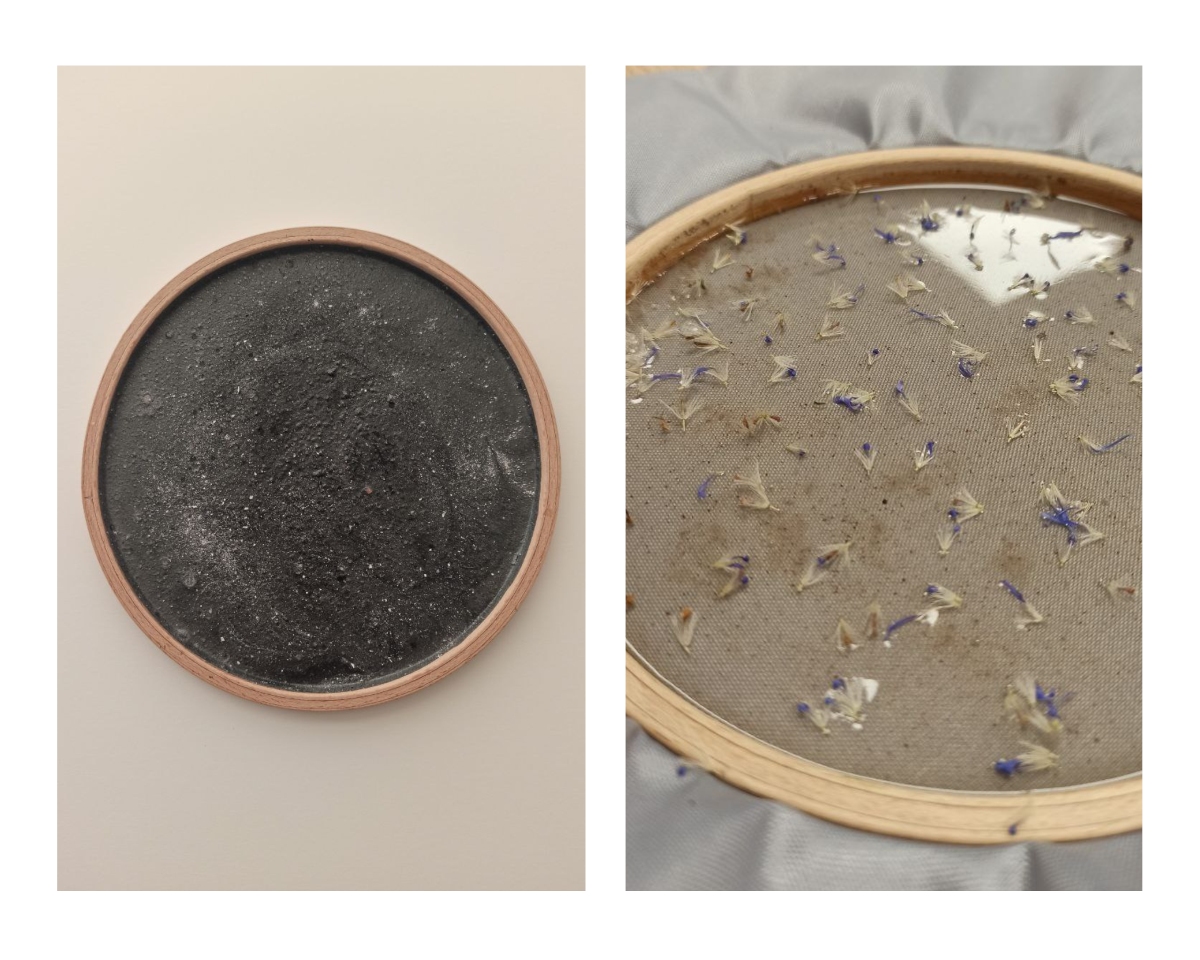
Banana leather¶
You can follow the process described bellow, to make the banana leather.

RESULTS¶
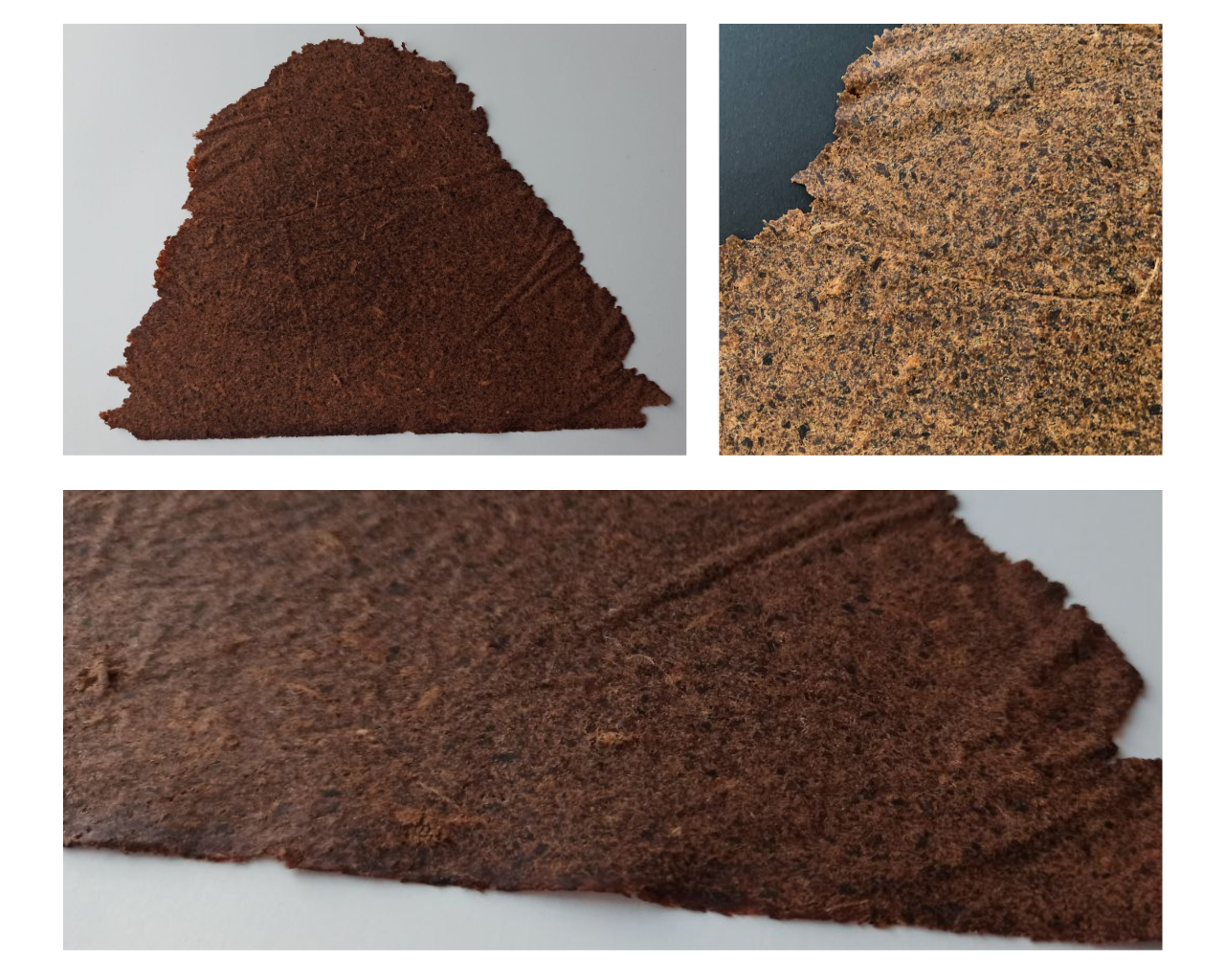
Kombucha leather¶
Kombucha Leather is a flexible bio-material alternative to leather is made from cellulose nanofibrils spun by bacteria and yeast. This material grows thicker over time and can become paper thin or leather like. It has the potential to be an alternative to animal sourced textiles and their harmful environmental impacts.
Our Lola was growing since July. Our colleague, Elena Bannaia was taking care of her. Lola needed her tea sweet, every 10 days, in order to keep growing beautifully. 24h prior to the extraction, we fed her Turmeric and Hibiscus tea, so she got some nice colors.

